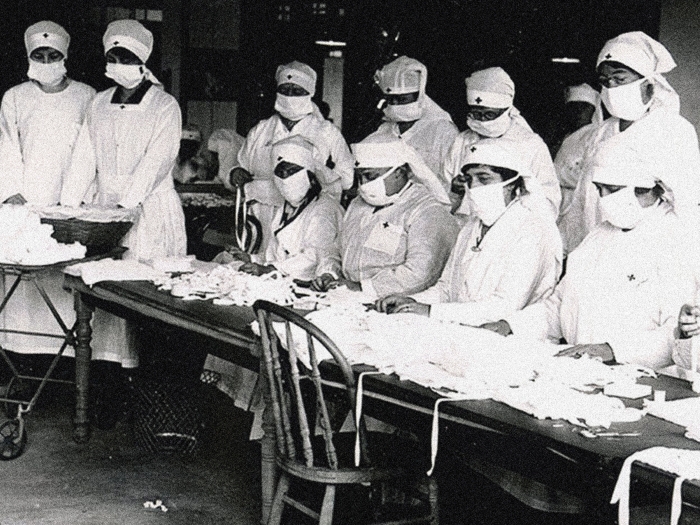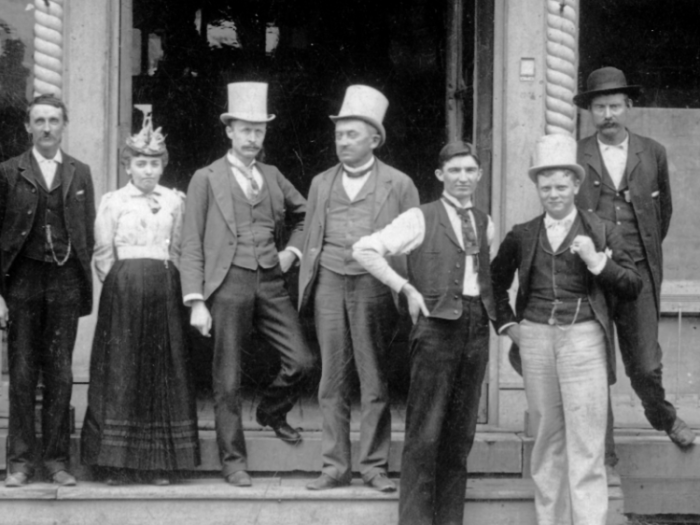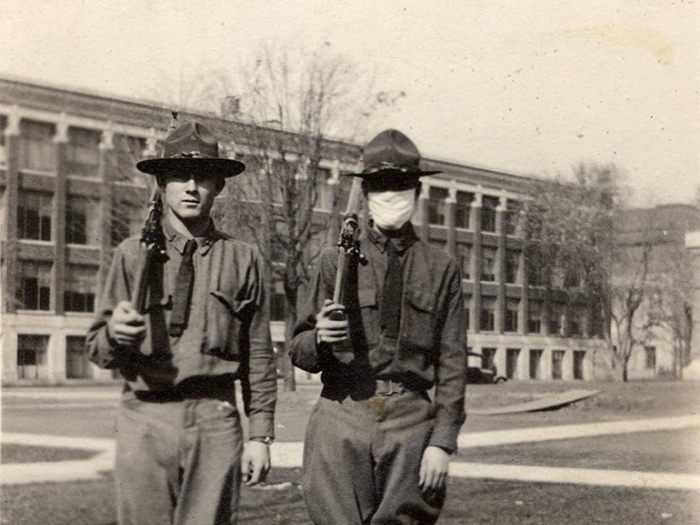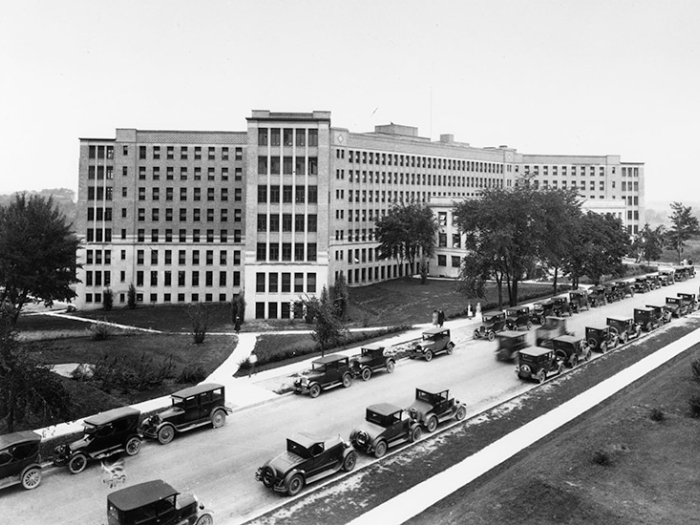For nearly 100 years after the Civil War, African-Americans who aspired to become doctors had few choices – but the University of Michigan was one of them.
In honor of that heritage, and of Black History Month, here are some key milestones and people who play a special role in our institution’s past.
Learn more about the history of what we now call Michigan Medicine at uofmhealth.org/history
1853: U-M’s first student of African-American heritage enters the U-M Medical School – but “passes” as white because of his mixed-race background. Samuel Codes Watson went on to graduate from a medical school in Cleveland, and to become a leader in pharmacy and politics in Detroit.
1863: Alpheus Tucker and John Rapier, Jr. enroll in the Medical School as the Civil War rages, and the nation’s leaders call for the medical training of more men of color. Rapier, a mixed-race man from Alabama who enrolls as a Jamaican thanks to his experience working in the Caribbean and Latin America, stays for nearly the entire academic year before leaving for Iowa. But Tucker endures race-based heckling from fellow students and is literally erased from the list of students soon after arriving. Like Rapier, he went on to earn a medical degree from Iowa. Read more in the Clements Library Quarto.
1872: William Henry Fitzbutler, M.D., becomes the first African-American man to graduate from the U-M Medical School. Born the son of a slave, he had escaped to Canada with his family via the Underground Railroad. After graduation, he went on to found a medical school and hospital for African-Americans in Louisville, Kentucky. One of the four ‘houses’ to which U-M medical students now belong is named for him, as is a professorship in the Department of Internal Medicine.
1878: The first African-American woman to graduate from any part of U-M is Grace Roberts, M.D., who earned a degree from the homeopathic medical school that had been founded at U-M in 1875. (The school and its hospital closed in 1922.)
1885: Sophia Bethena Jones, M.D., becomes the first African-American woman to graduate from the U-M Medical School. She came to Michigan from Canada, frustrated with the University of Toronto’s limited medical training program for women. After graduation, she became the first African-American to join the faculty of Spelman College, and established its nurse training program before going on to practice medicine in St. Louis, Philadelphia and Kansas City.
In 1913 she reflected on the health of African-Americans 50 years after the Emancipation Proclamation, writing, “Let the teaching of general elementary physiology, including sex physiology, and sanitation be placed on a rational basis in all colored schools and colleges, in the hands of men and women thoroughly trained and with full knowledge of the health problems named above, and there can be little doubt that the issue of the conflict will be such a rapidly declining death rate and reduced morbidity as will astonish the civilized world."
1898: With Ann Arbor’s African-American population beginning to boom, Katherine Crawford, M.D. sets up her medical practice on Fuller Street – one of about 150 licensed African-American female physicians in the country.
1920: Although the number of African-American medical students in each class was small, U-M was more welcoming than almost all U.S. medical schools. In a 1920 letter to the secretary for the AMA’s Council on Medical Education and Hospitals, a professor noted a special linkage with historically black Lincoln University in Philadelphia, which had sent a number of students to U-M.
1924: Marjorie Franklin enrolls as the first African-American student at the U-M Hospital School for Nurses (what we now know as the School of Nursing). She was initially denied university-provided housing because of her race, but fought for the right to live on campus and was allowed to live in the new Couzens Dormitory when it opened in 1925. Read more about the housing challenges facing female students of color here.
1946: James L. Curtis, M.D., graduates from the medical school after helping integrate the Victor Vaughn dormitory for male medical students during World War II. He went on to pursue specialty training in psychiatry at a time when less than 100 African-American physicians in the U.S. had trained for a specialty.
Later, he wrote leading books on the experiences of African-Americans in medical training, and efforts to increase the training of physicians of color. In one, he wrote that his was the last class in which U-M's African-American medical students had to travel out of state to do their clinical clerkships in obstetrics and gynecology, because they could not practice at the whites-only hospital in Detroit where U-M’s clerkship was held. But other than that, he wrote, he experienced no problems on clinical rotations in the U-M hospital.
1952: Albert Wheeler, Ph.D., becomes U-M’s first African-American faculty member, when he joins the Department of Microbiology and Immunology. After seven years leading a laboratory studying the bacterium that causes syphilis, he took a leave of absence to launch a second career in social activism and politics, including a term as Ann Arbor’s mayor in the 1970s. "A persistent and vocal leader who raised community consciousness and fought for human rights, Wheeler pioneered in the field of higher education to grant full access and equal opportunities to all minorities," said President James J. Duderstadt. He returned to the faculty with tenure and became an emeritus professor in 1981. Read his obituary in the University Record here.
1959: Jimmy Crudup is hired as a technician to set up a vascular surgery laboratory for Dr. Gardner Child. Though he never had formal medical training, his self-taught skills in surgical technique and education led to his becoming acclaimed as one of the finest surgical teachers at U-M for 30 years.
1967: Shirley Martin is hired as an administrator for student affairs, with a goal of increasing African-American medical student enrollment. Read her reminiscences of that time, including the promising student Benjamin Carson, M.D., here.
1969: With only 21 African-American students enrolled at the Medical School, U-M still had the fourth-highest enrollment of black students at non-historically black institutions. In fact, around this time, U-M was said to have graduated more African-American physicians in total than any school except Meharry Medical College and Howard University.
1972: The Black Medical Association is founded as a medical student organization, and organizes the first national symposium addressing the problems of black medical students, featuring future Surgeon General David Satcher, M.D. The chapter is still active today.
1981: Alexa Canady, M.D., a graduate of the Medical School, becomes the first African-American female neurosurgeon in the U.S.
Rhetaugh Dumas, Ph.D., joins the School of Nursing as its first, and U-M’s first, African-American dean. She goes on to become vice provost for health affairs from 1994 to 1997
1997: The Medica.l School’s African-American alumni association is named for Fitzbutler and Jones. It provides financial support and professional development opportunities, while encouraging philanthropy through the Fitzbutler Jones Society Opportunity Fund.

Department of Communication at Michigan Medicine



